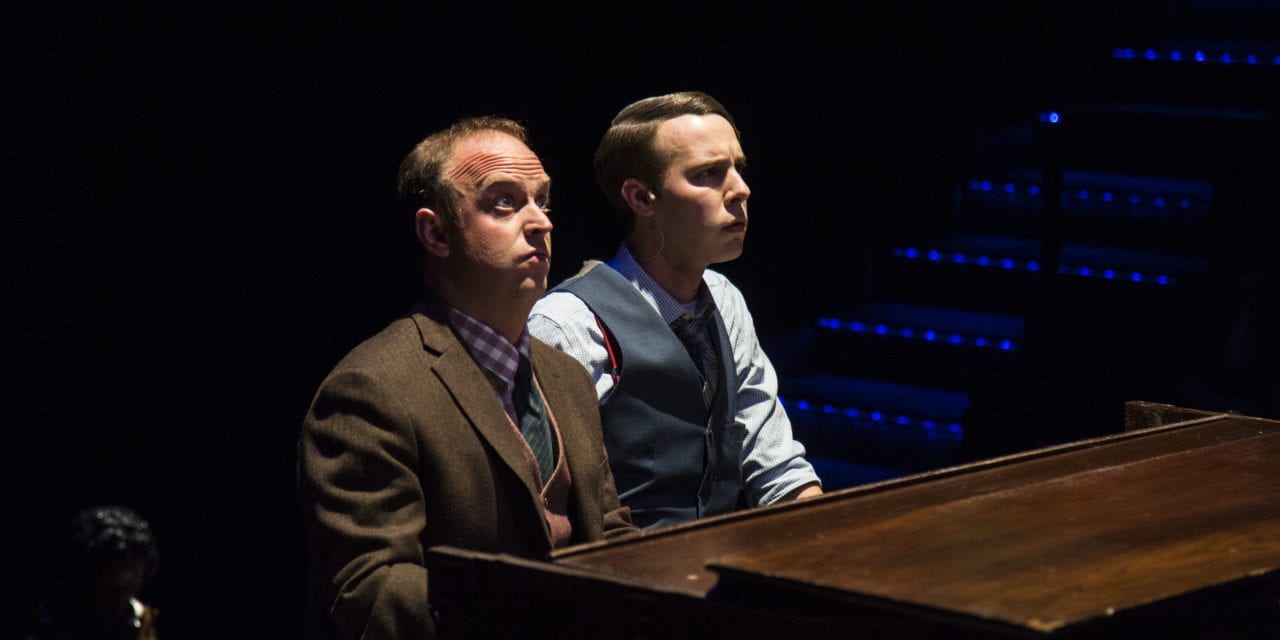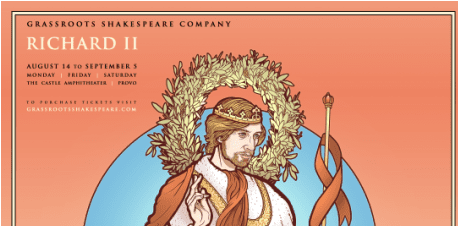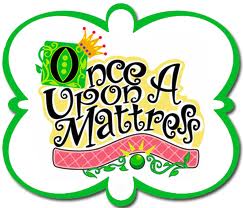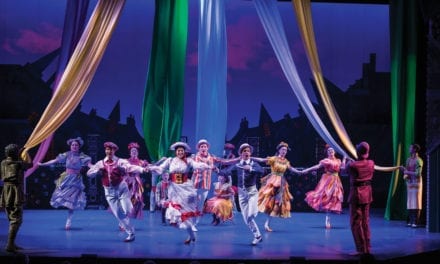CEDAR CITY — At the Utah Shakespeare Festival, the audiences are used to “murder most foul” on the stage. But what is more unusual at the Festival is when a murder is the center of a musical dark comedy like Murder for Two. Although it is an unorthodox show, Murder for Two is well worth the time it takes to visit Cedar City.

Paul Helm (left) as Marcus Moscowicz and John Wascavage as The Suspects in the Utah Shakespeare Festival’s 2016 production of Murder for Two. (Photo by Karl Hugh. Copyright Utah Shakespeare Festival 2016.)
At the center of Murder for Two is the investigation of the murder of prominent novelist Arthur Whitney. When the regular detective is unable to reach the crime scene quickly, a local police officer named Marcus Moscowicz sees this as his big opportunity to be promoted to detective. With his trusty (and silent) partner, Lou, at his side, Marcus must solve the murder before the detective arrives and also overcome his own personal tragedy.
As with any good mystery, Murder for Two keeps the audience guessing until the very end, thanks to a well crafted book by Kellen Blair and Joe Kinosian. (The former is also the lyricist, while the latter is also the show’s composer.) Red herrings are frequent, but the answer to the mystery follows the logic of the clues that are revealed as the story progresses. Carefully leading the audience through this is veteran Utah Shakespeare Festival director Brad Carroll, who found the right balance of tension and zaniness for this dark comedy.

John Wascavage (left) as The Suspects and Paul Helm as Marcus Moscowicz in the Utah Shakespeare Festival’s 2016 production of Murder for Two. (Photo by Karl Hugh. Copyright Utah Shakespeare Festival 2016.)
And zaniness abounds, especially in the work of John Wascavage, who plays all of the suspects in the murder. This requires Wascavage to make sudden changes in character and sometimes even hold conversations with himself, a comedic strategy that elicited frequent laughs from the audience. Wascavage’s bizarre characters were dizzying in their variety and included an old bickering couple named Murray and Barb, a professional dancer named Barette Lewis who was always practicing, and Steph Whitney (the murdered man’s niece). Although Festival audiences have seen this sort of quick character shift before, Wascavage’s work compares very favorably to similar work in recent shows like Stones in His Pockets and The 39 Steps.
It is difficult to convey in writing the variety of Wascavage’s performance. But his portrayal of Dahlia Whitney, the victim’s wife, was a sheer delight in the way he showed her daffiness and sugary personality. It reminded me of several older women I know who are unintentionally funny in their mannerisms and way of thinking. It was this very oblivousness that Dahlia had towards her comedy that made her so especially funny, and Wascavage was masterful in creating such an engaging character.

Paul Helm (left) as Marcus Moscowicz and John Wascavage as The Suspects in the Utah Shakespeare Festival’s 2016 production of Murder for Two. (Photo by Karl Hugh. Copyright Utah Shakespeare Festival 2016.)
Wascavage’s (figurative) partner in crime was fellow cast member Paul Helm, who plays Officer Moscowicz. Helm knows precisely how to create a sympathetic character, and within the first ten minutes of the play I wanted Moscowicz to succeed in getting his promotion. His completely charming “Protocol Says” was excellent in showing Moscowicz’s logical way of thinking, while still revealing his quirks. Helm was an integral part of the sinister mood needed for a successful murder mystery, and I found myself riveted in the “So What If I Did?” that he sang with Wascavage. The only drawback of Helm’s performance was the occasional snicker as he broke character because of the hilarity unleashed by Wascavage.
Visually, the anchor of this production is the piano. With nearly every song in the score requiring one or both actors to play the piano, the instrument was a quiet, domineering presence on the stage. Thus, I appreciated that scenic designer Jason Lajka painted the turntable that the piano sat on in a geometric black and white pattern, which was an excellent contrast to the earth tones and reds that dominated the rest of the set. As lighting designer, William Kirkham created an ominous mood when it became clear that the characters were in danger of upsetting the murderer. Yet, Kirkham could also support the abrupt change of mood that the show at moments like the beginning of “Steppin’ Out of the Shadows.”
Although it may not be a show that many readers have heard of, I suggest that readers attend Murder for Two. The fun mixing of dark comedy, musical theatre, and physical humor makes the show bold and new, while still seeming familiar. So give, it a shot. After all, it won’t kill you to attend.





